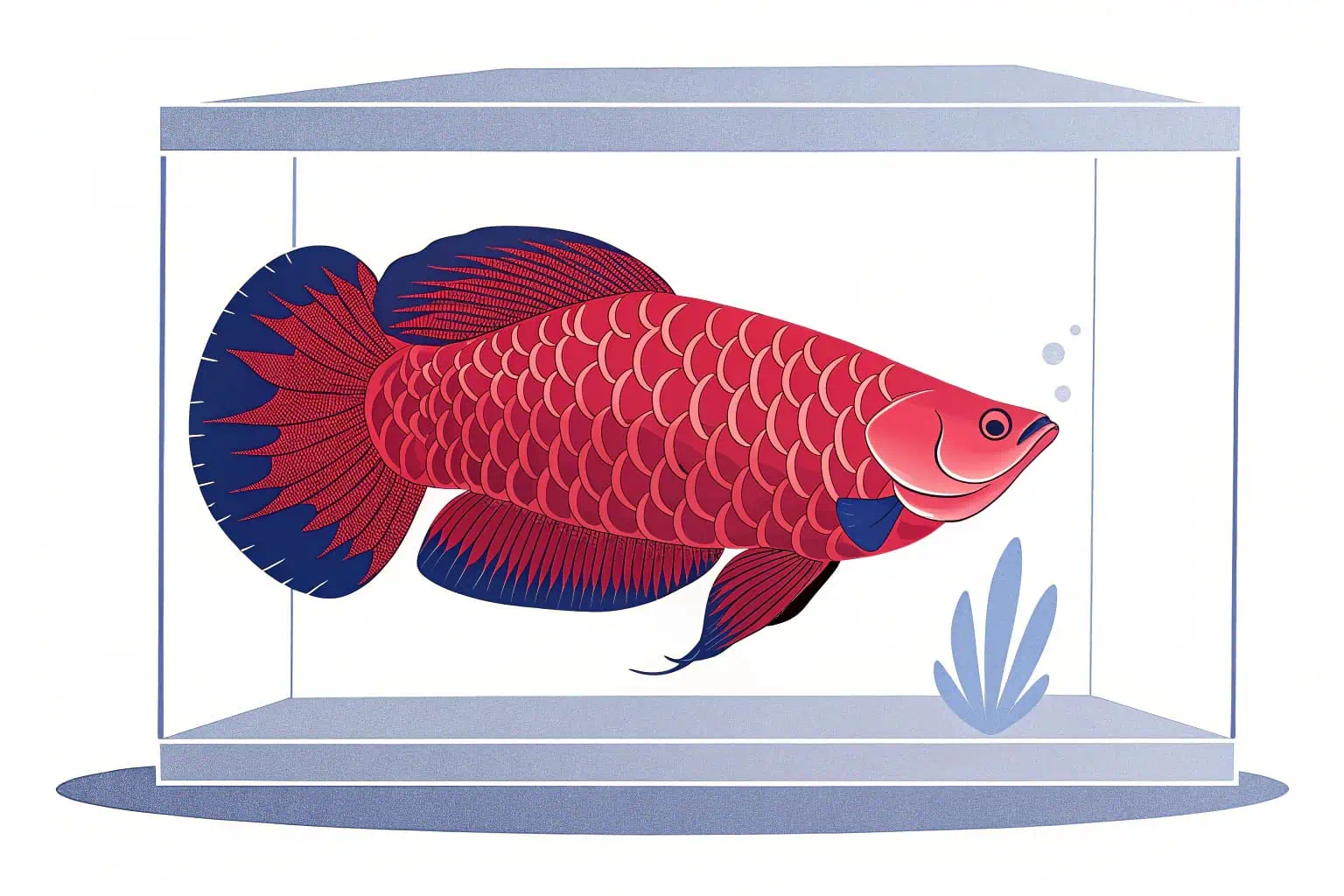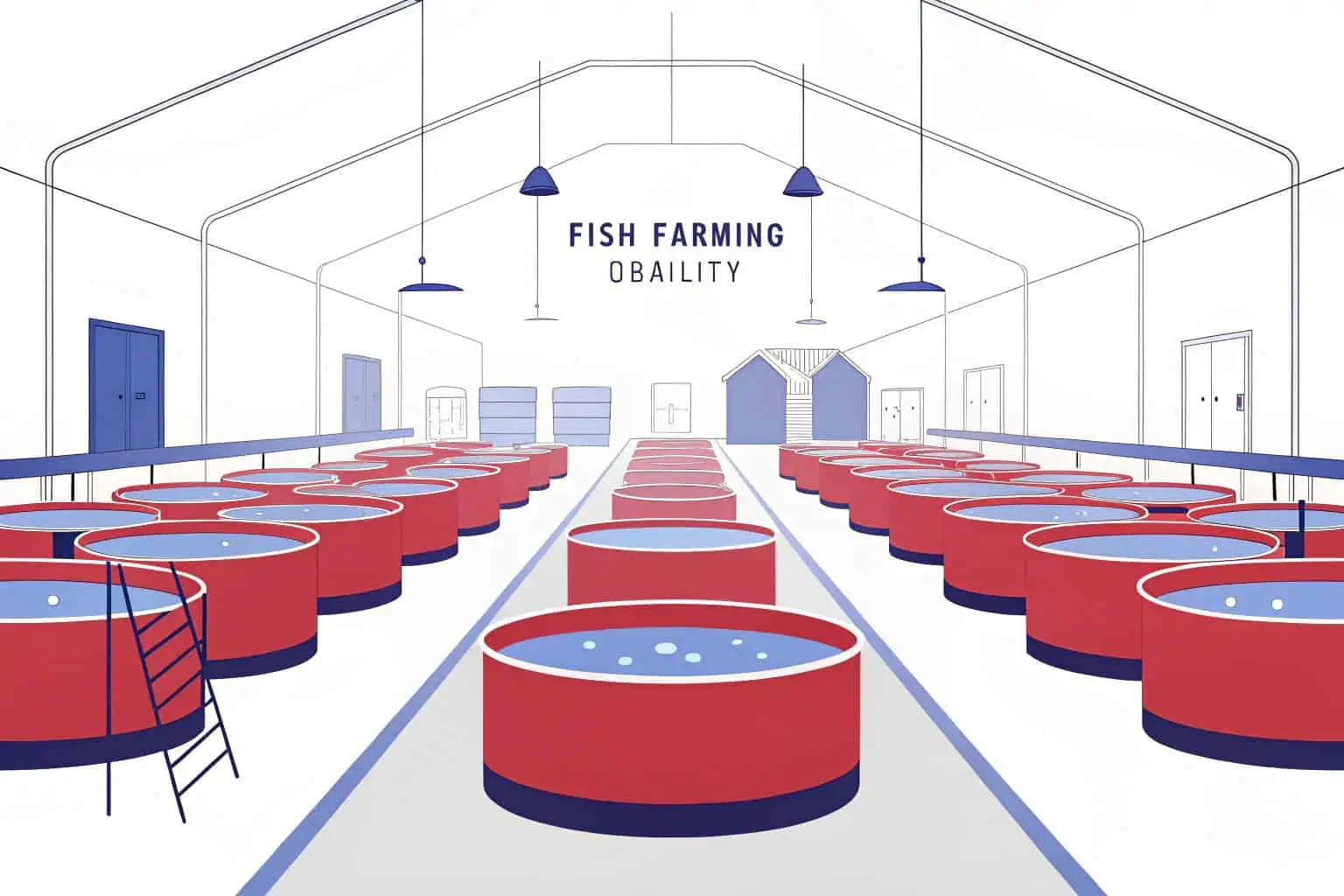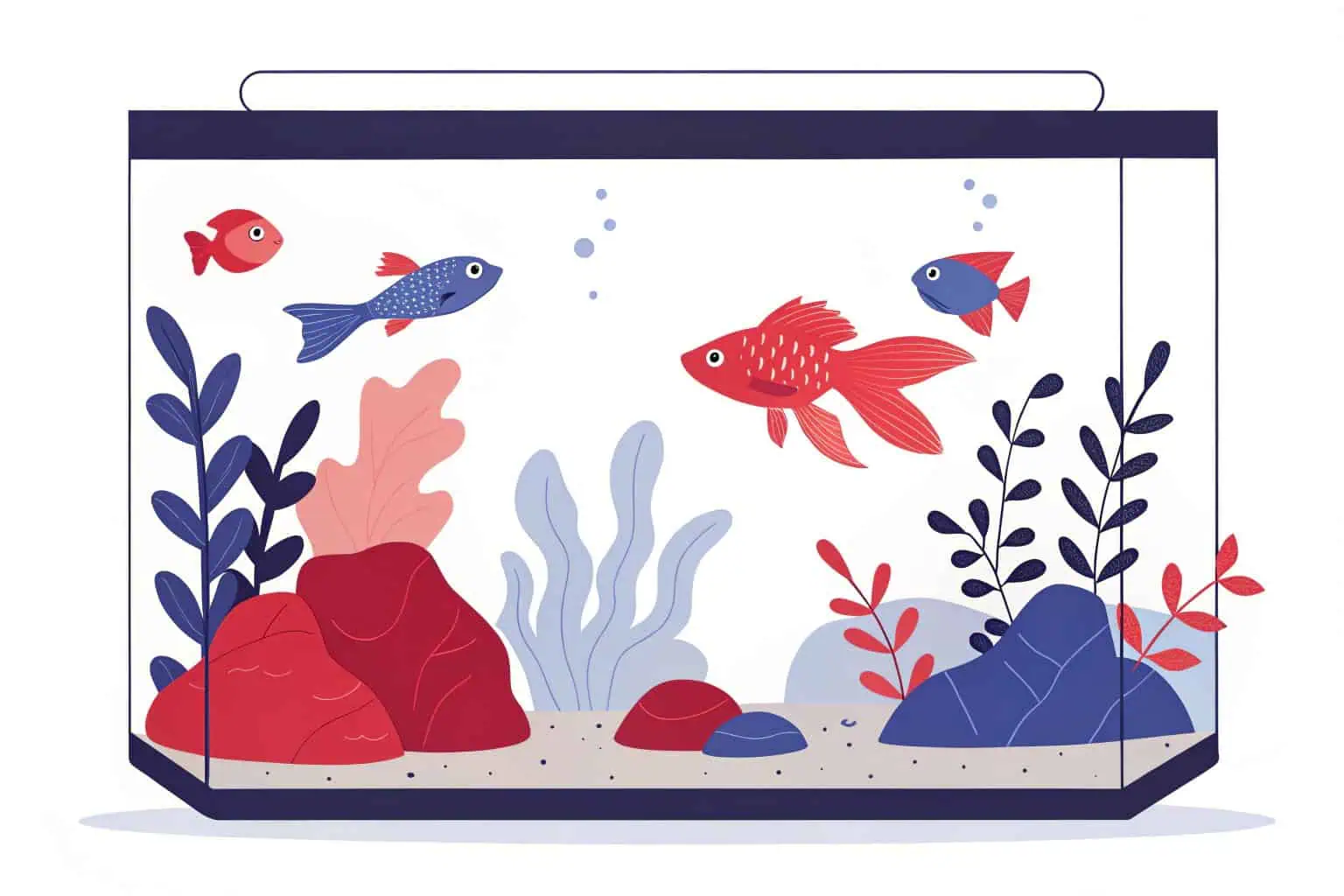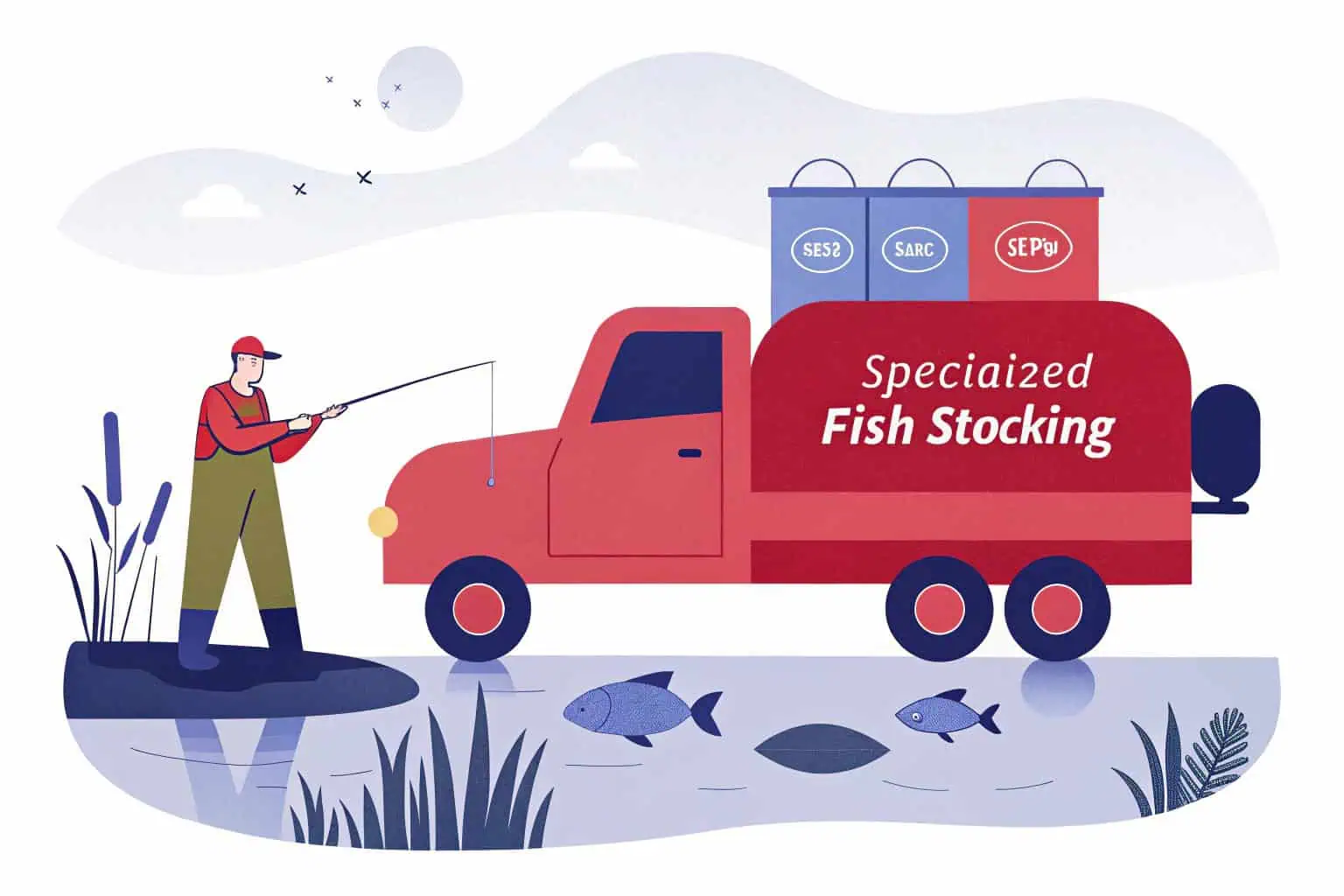How to develop an ornamental fish farm business plan?
Starting an ornamental fish farm feels overwhelming. You have the passion, but the business side is a puzzle. A solid plan is the key to turning your dream into a profitable reality.
A successful ornamental fish farm business plan starts with deep market research to identify a profitable niche. Then, detail your operational strategy, from tank setup to breeding protocols. Finally, create a comprehensive financial forecast, including startup costs, pricing, and projected revenue to ensure long-term viability.

I remember when I first started, the idea of a business plan was daunting. But breaking it down into smaller, manageable steps made all the difference. It’s not just a document for investors; it’s your roadmap to success. It forces you to think through every aspect of the business, from the fish you'll breed to the customers you'll serve. This process turns a passionate hobby into a viable enterprise. Let's explore the key components you need to include to build a business that not only survives but thrives.
What is the most profitable fish farming business?
You want to enter fish farming for profit, but which market offers the best returns? Focusing on the wrong fish can lead to wasted effort and money. The secret is in the niche.
High-value ornamental fish, like rare Koi, Arowana, or specific saltwater species, are often the most profitable. Their specialized demand, higher price points, and dedicated hobbyist market create significant profit margins compared to common food fish, making it a lucrative business focus for dedicated farmers.

Based on my experience in the ornamental fish industry1, profitability is a blend of science and art. It's not just about choosing an expensive species; it's about understanding the ecosystem that supports it and the market that desires it. Success comes from mastering the delicate balance of water quality, disease prevention, and market trends. I've seen many people jump in thinking they'll get rich quick, but the truly successful ones are those who are patient, strategic, and deeply passionate about the well-being of their fish. They understand that a healthy, vibrant fish is the ultimate product, and that requires constant learning and adaptation.
Identifying High-Value Niches
Profitability in fish farming is driven by market demand, not just the species. Beyond high-value fish2 like Koi and Arowana, emerging trends such as nano-fish and rare color morphs of common species offer lucrative opportunities. Researching hobbyist communities online is key to understanding customer desires and strategically positioning your farm.
| Aspect of Profitability | Focus on Market Demand | Examples of High-Value Opportunities | Method for Identifying Demand | Benefit of Method |
|---|---|---|---|---|
| Beyond Species | It's about what the market demands | Koi, Arowana (known high prices) | Researching hobbyist communities | Gain direct insight into customer desires |
| Emerging Trends | Don't overlook new trends and niche markets | Nano-fish (booming for small home aquariums3) | Observing trends on forums and social media | Anticipate demand and position your farm |
| Niche Markets | Rare color morphs of common species can fetch high prices4 | Rare color morphs of Guppies or Bettas (collectors) | Identifying collector interest | Identify what hobbyists are willing to pay a premium for |
| Staying Ahead | Anticipating demand and positioning your farm strategically | Unique and desirable fish offerings | Continuous research on forums and social media | Position farm competitively as a source of unique fish |
Balancing Cost vs. Reward
Remember that high-value fish often come with high-care requirements. Saltwater species need precise water parameters and expensive equipment. Some rare freshwater fish are notoriously difficult to breed. You have to balance the potential profit with the investment in time, expertise, and equipment. I started with hardier, mid-range species to build my skills and cash flow before venturing into more demanding, high-reward fish5. This approach allowed me to learn the ropes without risking a huge financial loss. It's a marathon, not a sprint. Building a solid foundation with more forgiving species gives you the confidence and the capital to tackle the more challenging, and ultimately more profitable, segments of the market later on.
How do you start a fish farming business?
Eager to turn your fish-keeping hobby into a business? The leap from enthusiast to entrepreneur is huge and full of pitfalls. A clear, step-by-step approach is essential for a smooth start.
To start a fish farming business, first, choose your niche (e.g., ornamental or food fish). Then, secure a suitable location and acquire the necessary equipment like tanks and filtration systems. Develop your breeding and care protocols, and finally, establish a marketing and sales channel to reach your target customers.

My journey into this business was fueled by a love for aquatic life, but passion alone doesn't pay the bills. The transition from hobbyist to business owner required a major shift in mindset. I had to learn about supply chains, marketing, and customer service. The most important lesson was that you are not just selling fish; you are providing a piece of a living ecosystem. Your customers, whether they are beginners or seasoned collectors, rely on your expertise and the quality of your stock. Building that trust is the cornerstone of a sustainable business.
Step 1: Planning and Research
Before buying a single tank, I spent months planning. This is where your business plan becomes critical. You need to decide on your scale. Are you starting in your garage or leasing a commercial space? What are the local regulations and permits6 you need? I found that talking to other local farmers gave me invaluable insights that I couldn't find online. Their practical advice on everything from water sources to pest control was priceless. Your initial research will save you from costly mistakes down the road and set a solid foundation for your operations. Don't rush this stage; thorough planning is the best investment you can make.
Step 2: Setting Up Your Infrastructure
Your choice of tanks is one of the most important initial decisions. For flexibility and scalability, I'm a big fan of collapsible tanks7. Products like galvanized pipe or sheet fish tanks8 are durable and perfect for both breeding and grow-out stages. They are easy to set up, move, and expand as your business grows. This is much more cost-effective than building permanent concrete ponds, especially when you're just starting out and need to manage your capital carefully. Using a modular system like this allowed me to start small and add more tanks only as my sales and fish population grew, which was a much safer way to scale the business.
Step 3: Sourcing and Operations
Once your setup is ready, you need to source your initial breeding stock from reputable suppliers. Don't skimp on quality here; healthy breeders are the foundation of your business. From there, it's all about operations: managing water quality, feeding schedules, and disease prevention9. I learned early on to document everything. I keep detailed logs of water parameters, feeding responses, and spawning activity. This data helps you optimize your processes, identify problems before they become catastrophic, and ensure consistent results. It transforms fish keeping from guesswork into a predictable and manageable science, which is essential for running a professional operation.
Which is the major fish used in ornamental fish farming?
The world of ornamental fish is vast and colorful. With so many options, which species should you focus on? Choosing the right fish is crucial for aligning with market demand and your capabilities.
While there isn't one single "major" fish, the most popular and widely farmed ornamental fish globally are guppies, goldfish, angelfish, and bettas. These species are favored for their hardiness, ease of breeding, vibrant colors, and consistent high demand from both beginner and experienced hobbyists.

As someone deeply involved in this industry, I see these popular fish as the gateway for many enthusiasts. They are the species that spark the initial interest and often lead people deeper into the hobby. While the allure of rare and exotic fish is strong, there is a steady, reliable business in providing high-quality versions of these common favorites10. The challenge and opportunity lie in innovation—developing new color strains11, ensuring robust health, and using sustainable practices. This commitment to quality can turn a common fish into a premium product and build a loyal customer base.
The "Big Four" of Ornamental Fish
I call guppies, goldfish, angelfish, and bettas the "big four" because they form the backbone of the ornamental fish trade12. They are what most people picture when they think of a home aquarium. They are consistently in demand and offer a great starting point for any new fish farming business.
| Fish | Key Advantages | Target Market |
|---|---|---|
| Guppies | Prolific breeders, endless color varieties. | Beginners, breeders creating new strains. |
| Goldfish | Iconic, hardy, various fancy types.13 | Beginners, pond owners, collectors. |
| Angelfish | Graceful, popular centerpiece fish. | Intermediate hobbyists. |
| Bettas | Stunning colors, small tank requirements. | Beginners, desktop aquarium owners. |
Focusing on one or two of these can be a very stable business model. You can build a reputation for high-quality, healthy stock that pet stores and hobbyists will seek out. The key is to differentiate yourself through quality14, not just price.
Beyond the Basics
While the big four are safe bets, real passion and profit can often be found in more specialized areas. Cichlids from Africa's Rift Lakes15, for instance, have a massive and dedicated following. Discus, often called the "king of the aquarium," command very high prices but require expert-level care to breed and raise successfully. Even invertebrates like ornamental shrimp are a rapidly growing market with their own passionate community of hobbyists. My advice is to start with what you know and love. Your enthusiasm will shine through in the quality of your fish. As you gain experience and confidence, you can then branch out into more challenging and potentially more rewarding species, growing your business alongside your skills.
How to start a fish stocking business?
Thinking beyond the aquarium? A fish stocking business for ponds and lakes is a unique opportunity. But it requires a different approach than typical ornamental farming. Let's outline the path to success.
To start a fish stocking business, first identify your target market, such as private pond owners or fishing clubs. Then, raise or source popular stocking species like bass, trout, or catfish. You will need specialized transportation equipment, including aerated tanks, to deliver the fish safely to your clients' locations.

This side of the aquaculture industry is less about aesthetics and more about ecology and recreation. It's a service-oriented business where you become a partner in managing a client's aquatic environment. I've found that customers in this market value reliability and expertise above all else. They are not just buying fish; they are buying the promise of a healthy pond or a great fishing experience. Your role is to deliver on that promise, which requires a deep understanding of fish biology, logistics, and customer relations. It's a challenging but very rewarding field.
Understanding the Market
A fish stocking business targets a distinct clientele, including landowners, recreational clubs, and government agencies. Understanding local demand is paramount, specifically identifying whether clients seek game fish for sport or species for control like grass carp. This market intelligence is vital for aligning production and inventory with the often seasonal stocking periods, typically spring and fall.
| Aspect of the Business | Focus on Client Base and Demand | Examples of Client Needs | Method for Understanding Demand | Benefit of Understanding Demand |
|---|---|---|---|---|
| Clientele | Not selling to hobbyists, but to specific client bases | Landowners, recreational clubs, government agencies | Identify target clientele | Tailor services and fish offerings to client needs |
| Market Demand Research16 | Research local demand for stocking needs | Game fish (bass, trout) for sport | Research common pond types in the area | Dictates which fish species to focus on for production |
| Species Focus17 | What kind of fish are clients looking for? | Species like grass carp for vegetation control | Understand client objectives for stocking | Aligns production with market needs |
| Seasonal Nature18 | Business is often concentrated in specific seasons | Stocking often in spring and fall | Understand seasonal trends in stocking | Crucial for planning production and inventory |
| Market Intelligence | Crucial for planning production and inventory | Alignment of production and inventory | Gathering information on local demand | Ensures production meets seasonal demand and client requirements |
Logistics is Everything
This business is all about logistics. The fish you sell are worthless if they don't arrive alive and healthy. This means investing in a reliable truck and a professional-grade fish transport tank19 with proper aeration and temperature control. I learned the hard way that cutting corners on transport equipment leads to dead fish and unhappy customers, which can destroy your reputation overnight. You also need to plan your delivery routes efficiently to minimize travel time and reduce stress on the fish. Every detail, from water quality in the transport tank to the acclimatization process at the delivery site, matters. Mastering these logistics is what separates the amateurs from the professionals.
Building a Reputation
In the fish stocking business, your reputation is your most valuable asset. It's built on providing healthy, disease-free fish20 and offering expert advice. I always try to do a site visit or at least have a detailed conversation with the client about their pond's size, depth, and water quality before recommending a stocking plan. This level of personalized service builds trust and demonstrates your expertise. It leads to repeat business and, more importantly, word-of-mouth referrals. In a niche industry like this, a strong, positive reputation is the most powerful marketing tool you can have. It's what will sustain your business for the long term.
Conclusion
Starting an ornamental fish farm is a journey of passion and strategy. By creating a solid business plan, choosing the right niche, and focusing on quality, you can build a thriving enterprise.
-
Explore this link to gain insights into the dynamics of the ornamental fish industry and how to thrive in it. ↩
-
Exploring this link will provide insights into the profitability and market trends of high-value fish, essential for fish farming success. ↩
-
This resource will guide you on the best nano-fish options, tapping into a growing market trend. ↩
-
Explore this link to discover which fish species command high prices, helping you make informed decisions in your business. ↩
-
Learning about high-reward fish can guide you in making profitable choices as you advance in your fish-keeping endeavors. ↩
-
Understanding local regulations is crucial for compliance and success; this link will guide you through the necessary steps to avoid legal issues. ↩
-
Explore the advantages of collapsible tanks for aquaculture, including flexibility and cost-effectiveness, to enhance your fish farming strategy. ↩
-
Learn why galvanized pipe or sheet fish tanks are durable and ideal for breeding, ensuring a healthy environment for your fish. ↩
-
Preventing disease is key to a thriving fish farm. Learn about proven methods and practices to keep your stock healthy by checking this link. ↩
-
Exploring this link will help you understand the foundational species that attract new fish enthusiasts. ↩
-
Discover the innovative techniques behind breeding new color strains that can elevate your offerings in the fish market. ↩
-
Understanding the ornamental fish trade can provide insights into market trends and opportunities for fish farming. ↩
-
Learn about the unique characteristics of goldfish that make them a staple in aquariums and ponds. ↩
-
This link will offer strategies on standing out in a competitive market by focusing on quality, which is crucial for long-term success. ↩
-
Explore this link to discover expert tips and insights on caring for Cichlids, enhancing your aquarium experience. ↩
-
Explore this resource to learn how to effectively assess market demand, ensuring your business aligns with client needs and maximizes success. ↩
-
Discover insights on popular fish species to stock, helping you meet client expectations and enhance your offerings. ↩
-
Understanding seasonal trends is vital for planning; this resource will help you optimize your production schedule accordingly. ↩
-
Exploring the key features of a professional-grade fish transport tank can enhance your fish transport process and customer satisfaction. ↩
-
Exploring this resource will provide insights into the importance of fish health in stocking and aquaculture, enhancing your understanding of best practices. ↩